Mini Cooper 2007 News
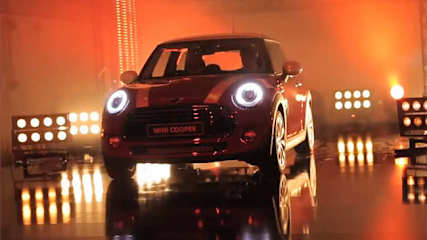
New Mini unveiled | video
Read the article
By Staff Writers · 22 Nov 2013
The new Mini arrives here early next year with new efficient engines, a larger body and some changes to styling, but largely continuing with the signature design recipe.
It has however grown 98mm in length to 3821mm, 44m in width to 1727mm and 7mm in height to 1414mm on a 34mm longer wheelbase at 2495mm to give more cabin room and an additional 51 litres of luggage space.
There's big news under the skin too, where the Mini debuts the new UKL platform that will in time underpin more new Minis and some new models from parent company BMW.
Watch the 2014 Mini Cooper unveiling video on our desktop site.
_______________________________________
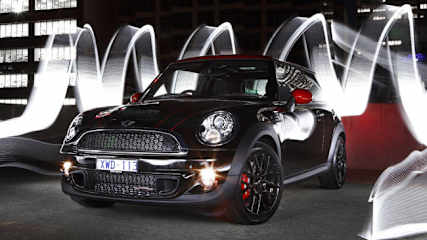
Mini John Cooper Works get new engine
Read the article
By Karla Pincott · 21 May 2012
The new unit is based on the one in the 1.6-litre Mini Cooper S, with twin-scroll turbocharger, direct fuel-injection and variable valve control. The turbocharger is tweaked for extra boost and the engine has been fitted with a new high-performance exhaust system – finished with twin stainless-steel tailpipes.
Engine outputs are 155kW of power at 6000rpm, and 260Nm of torque from 1850-5500rpm, with 280Nm available for a few seconds on overboost between 2000-5200rpm.
It will be mated to a six-speed manual transmission as standard, but there will still be the option of a six-speed automatic with a manumatic mode and shift paddles mounted on the steering wheel.
Mini says the new engine gets a weight-saving aluminium block and bearing mounts, lighter crankshaft, reinforced pistons and a high-strength cylinder head.
The manual transmission gets a fuel saving stop-start system, and the load on the electrical system is reduced by brake energy recapture with the alternator disengaging at high revs – combining to cut your fuel burn by about 500ml per 100km.
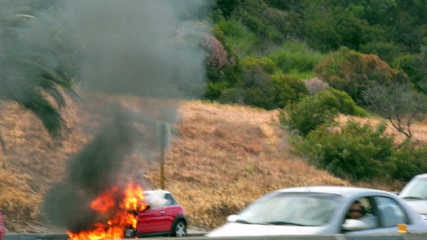
235,000 Mini Cooper S recalled
Read the article
By Stuart Martin · 17 Jan 2012
High performance versions of the Mini Cooper are being recalled worldwide to fix an engine problem that could potentially start a fire.More than 235,000 of the turbocharged Cooper S models built between 2006 and last year are being recalled worldwide to remedy a secondary water pump fitted to cool down the turbocharger.The company has global reports of just over 80 water pump failures and four fires as a result, but BMW Australia and local authorities have deemed the program here to be a technical service campaign,Mini Australia spokesman Piers Scott says just over 3700 Cooper S (of which one may have experienced the smoldering engine bay issue) and John Cooper Works vehicles built between 2006 and 2011 are effected in Australia."This was deemed to be a technical campaign, in-line with similar campaigns conducted in the past," he said.Mr Scott said the use of the term `recall' overseas to describe the issue."It is the Department of Infrastructure and Transport that we liaise with locally and they would advise us if it were to be a safety Recall.""There is no less urgency under a technical campaign - replacement parts are now in the country and Mini Australia has already begun contacting affected customers," he said.The worldwide recall of 235,000 cars includes 29,868 in the UK and 89,000 in the US and involves replacing the water pump free of charge.The company head office said that the turbocharged engines are fitted with an additional water pump to remove residual heat from the turbocharger after the engine was switched off."Under high operating temperatures an electro-migration can occur at the circuit board installed in the additional water pump," it said."This can lead to a failure of the additional water pump or smoldering and even a fire cannot be excluded."More than 200,000 Minis are built each year at the company's Oxford plant, where production started in 2001and recently passed two million vehicles built - the car is exported to more than 90 countries.The turbocharged engine is shared with Citroen and Peugeot, but both French companies said there engines employed different electrical systems.
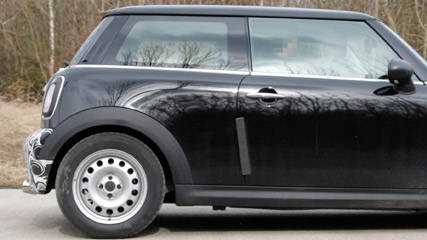
Mini Cooper S | spy shot
Read the article
By Paul Gover · 01 Apr 2010
So the 2011 Mini Cooper S facelift photographed by Carparazzi in Europe is essentially … more of the same.There are some small changes in terms of a revised air intake and it’s likely there could still be a surprise under that bumper camouflage. Some attention has also been paid to the light clusters, with the rear set now sporting LEDs.However, with the increasing pressure of emissions regulations, the Mini is also likely to have some upgraded engine technology aimed at reducing CO2 while improving outputs.Insiders are tipping that a variable-valve system will be added to the current 128kW/240Nm turbocharged 1.6-litre petrol engine, while the naturally aspirated 88kW/160Nm version will also be tweaked – although there are no hints of how much it will increase the outputs of either.
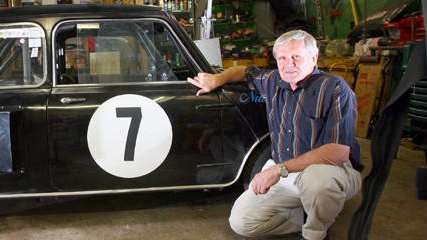
My 1964 Mini Cooper S
Read the article
By Mark Hinchliffe · 08 Mar 2010
Mini designer Alec Issigonis and performance tweaker John Cooper had a brain explosion in 1964 and developed a model with twin motors. Cooper crashed it, spent eight months in hospital and the idea was officially shelved. It hasn't stopped many backyard mechanics from having a go ever since, including Brisbane dentist Bill Westerman."Five years ago I was drinking beer with my friend Fred Sayers and we both decided to build one," he says in his garage littered with Mini engines in various states of rebuild. "Right from the word go — when the hangover cleared — we got stuck right into it."His 1964 Mini Cooper S with a "worn-out" 1293cc engine in the front and another in the back is called "Nuts". "Because you have to be nuts to drive it and it's better with two," says Westerman with a cheeky grin."I don't know what I paid for this one. It came from a shell. I had a shed load of Minis at the time. It's a sickness, you know."The graduate dentist began learning his mechanical skills from his first car which was a composite Series II Land Rover he made from two he bought at auction. His love of Minis started with his second purchase in 1969 when he bought a new Cooper S for $2500 and headed off to work in outback Waikerie, South Australia."I realised fairly quickly that what you really need in the outback is a V8, so I bought an XY Falcon ute," he says. "It went through a set of tyres every 6000 miles (9656km), a set of shocks every three months and universal joints at least once a year over those corrugated roads."His next car was a modified VB Commodore V8 wagon donated to the young dentist by Holden. He had it about five years before returning to Brisbane, more study at the University of Queensland and the start of his amateur career racing Minis from 1986 to today."The aim was to race all the circuits in Australia and I've just about done that except for Perth and Darwin," he says. "I've had a lot of fun. Racing has been very good to me. I've always been in the middle of the pack because I didn't spend enough money on the race car to win."His efforts to get more power out of a Mini and get further to the front of the pack led him down the ignominious Issigonis path of a twin-engined model. "We were worried after the first drive as it was an extremely difficult beast to keep on the road," he says. "There has to be co-ordination between the two motors. The gearing is the same and all the internals in the engine are the same, but we set the front so it was revving slightly harder so there is a bit of a pull factor."The revelation that kept the beast on the road came from an article in a 1960s Sportscar World magazine about the Formula One Ferguson all-wheel-drive race car. "We got a lot of hints from that; you need an overdrive diff on the front and back," he says. "We put one in the front and it made a bit of a difference and then we put one in the back and all of a sudden it goes. The diff takes up the front-to-back bias. It used to crab before that."The other major problem was the suspension. "Minis usually understeer, but this one was really taily at the start, not because of the weight in the rear but the front suspension we put in the rear. The problem was the back castor ... it had too much toe-in and we had to remove it. Instead of a steering box and steering geometry we made it into a straight-ahead suspension. Now I can drive it over all the ripple strips and still maintain control of the car. We have handling reasonable so now we are after more horsepower."Two more powerful engines in various stages of rebuild are sitting on the floor of his garage waiting to be thrown into the "Nuts" car. "I have the theoretical knowledge of mechanics to build an engine but Fred has the practical knowledge to make it work," he says. "It's been an interesting engineering exercise."Unfortunately, the car won't be ready in time for the second annual Cootha Classic hillclimb which Westerman organises for the Historic Racing Car Club of Queensland. "Maybe next year," he says.The Cootha Classic will be held on May 29-30 featuring more than 250 cars and about 50 motorcycles from the 1920s to today in timed sprints around a 1450m track up and down Sir Samuel Griffith Drive with seven corners and chicanes.Racing starts at 8.30am. Entry is $20 a day, $15 for concession, $30 for a two-day pass and $5 for parking in the J.C. Slaughter Falls carpark.Visit: www.visitbrisbane.com.au.
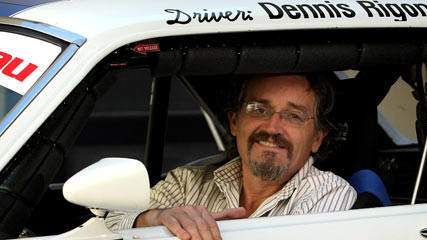
My 1967 Trans-Am Mustang
Read the article
By Mark Hinchliffe · 18 May 2009
Cancer as a boy left him blind in one eye, but it hasn't slowed him down. The 51-year-old Gold Coast businessman has owned a host of performance cars from a Mini Cooper S to his current 400 horsepower Trans-Am Mustang and has raced since he was 40. Except for the years 1998-2001 when CAMS took away his race licence because of his sight.Rigon loves a good stoush, so he took CAMS to court and won and is now the only one-eyed driver licensed to race in national events. His first car was a 1968 Mini Cooper S former NSW police pursuit vehicle."The police had GTHOs, Chargers and Mini Cooper Ss back then," he explains. "It had great handling and was very quick, but I eventually blew the engine up driving it too hard."He then moved to a Mazda RX4 Coupe "rocketship", followed by several company cars, a GTV6 Alfa Romeo in 1989 and a Porsche 911 Carrera. "The Alfa stayed with me for some time and was picked up by a collector in Western Australia, an 81-year-old lady who had it fully restored it," he said. "Being Italian it never stayed together and spent more time in the repair shop than it was on the road, but it was a great car to own."His current everyday cars are a 2007 V8 SS Commodore and an ex-police Ford Typhoon F6: "I like to buy ex-police cars because they are looked after and have a few trick bits."Rigon was a late starter to racing at the age of 40 competing in the WA Formula Ford series against eventual winner Garth Tander. He's made up for it since with a host of race cars, including two Subaru WRX STIs. But the Trans-Am Mustang he bought early last year is his favourite."It's the most pleasurable car to drive because it is not as technical as a modern race cars which are very forgiving," he says. "Modern race cars take a lot of technology to make them run quick but there is a lot more driver skill required in old cars. They tend to go sideways quite a bit.""It's something about our age group. It was the car that always appealed to me. "I was heavily inspired by Steve McQueen in Bullitt and always loved American Trans-Am (1964 to '74 American V8-powered cars) racing series as well as the Australian equivalent with Bob Jane, Allan Moffat driving around in Mustangs and Comaros. That was the style of racing I could really identify with."He's now the treasurer of the fledgling Australian Trans-Am Series which, not surprisingly, doesn't operate under CAMS licensing. "The average age of the racers is 45 to 60 and those drivers wouldn't necessarily get a CAMS licence which can take a year to get a full licence," he says.The series has 24 members with about 12-14 cars lining up on the grid. "We believe that will grow to a full field of 24 in about six months and about 34 in 12 months at any race meeting making it the largest Trans-Am series outside the US."Needless to say, his dream machine is a race car. "One of those limited edition GT3 Porsches," he is quick to answer. "I have always had a love for Ferraris but Porsches can take a pounding. They are a bullet proof car. For my driving style - while I love Italian cars - they just don't stay together."
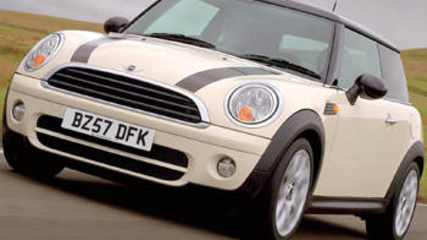
Starting the stop/start
Read the article
By Paul Gover · 13 Apr 2009
They will be making a major contribution to the greening of our new-car fleet as they kill the engine at stoplights instead of wasting fuel and creating pollution as they idle at a red.I first drove a stop/start car around 1994 when Volkswagen brought an evaluation car to Australia to highlight the EcoMatic technology in its then-new Golf III. The greener Golf never got past the evaluation stage here, and only lasted about 18 months in Europe because of very slow sales, but it was the start of something special.I can still remember the horror of pulling up to a red light in Sydney's city centre and having the engine die. My instinct was to re-start it immediately, but I resisted the temptation and it fired when I selected a gear as the light turned green.I had the same mild panic when I drove a stop/start Land Rover Freelander in Britain a couple of weeks ago. As I selected neutral the engine died, but when I dipped the clutch to select first on the green it fired immediately with no drama.We are all going to have to overcome the same panic in future years as stop/start leads us into a generation of cars with all sorts of new systems. Some will have 'active' alternators which only charge on demand, others will have electric water pumps to cut engine drag, and there will be cars with all sorts of new controls for the power steering and airconditioning. Some will have the lot.We've already seen cylinder deactivation systems in cars from GM Holden and Honda, which effectively cut the size of the engine in low-load situations, and they will also be commonplace.Land Rover had hoped to be first in Australia with stop-start technology but is going to be pipped by Mini.The Cooper D will be in showrooms on May 1 with stop/start and the claim that it is the most fuel-efficient car sold in Australia.Other makers are likely to follow Land Rover, although Fiat and Citroen have already looked at stop/start for Australia and ruled it out because of the cost.But the price of fuel is creeping back up again and no-one is going backwards on emissions.So stop/start is definitely coming, although it is currently only available on manual cars because of the complication of re-starting an automatic which is stopped at the lights in drive. Many companies are already working on a stop/start system for their autos, but it usually involves some sort of special starter-alternator pack and American brands are calling theirs a new form of mild hybrid.Once the stop/start automatics start to land we are really going to see the dominos beginning to fall.

BMW 120i or Cooper S Chilli
Read the article
By Brendan Quirk · 27 Sep 2007
It may seem like a strange comparison. A BMW 120i up against a Mini Cooper S Chilli. From a historical perspective, it's a small German luxury vehicle against a utilitarian British car for the masses, albeit the performance variant. But as with any number of instances in the car world these days, history has little to do with the reality of the present.True, the British Leyland Mini of the 1960s was a no-frills car. It came with the bare essentials, including a four-cylinder 850cc engine and four-speed manual gearbox.And, at the same time, in this neck of the woods (Australia) anything with the spinning propeller badge was considered luxury, even if it was merely as a result of exchange rates that had BMWs priced at least 150 per cent above most other cars.But how times (and exchange rates) have changed. Both the BMW120i and the Mini S Chilli now come from the same family, the BMW group. These days, neither would be considered as a true luxury vehicle.And since both appeared in the carsguide garage recently, both are around the $50,000 mark, why not a comparison?Today's Mini is to all intents and purposes designed and built by BMW. Bits of it come from various parts of Europe but it is a German car masquerading as a British vehicle.You get two doors, in the “S,” a highly sophisticated 1600cc turbocharged engine, and, in the test car, an equally sophisticated six-speed automatic gearbox. The interior, and for that matter the external appearance, is about as far from utilitarian as it's possible to get, especially in this “Chilli,” which came with heated leather seats, six airbags, floor mats, interior lighting package (colour adjustable), climate control, cruise control, 10-speaker sound system, sports seats and stainless steel pedals and footrest.Automatic transmission ($2200), Dynamic Stability Control ($840), chrome line interior ($250), glass roof with sliding and tilting function ($1840) and seat heating ($560) brought the total cost to $49,190.The BMW 120i five-door hatch (with executive package) tipped the scales at $52,850, thanks to options such as metallic paint ($1300), executive package of leather, USB interface and preparation for Bluetooth mobile interface ($1700), BMW navigation system ($3500), luggage compartment separation net ($150), electric glass sunroof ($2200) and voice recognition system ($700).Options excluded, the Beemer was $43,300 and the Mini $43,500.So for the same money you could have either vehicle. On the one hand a quick turbocharged 1600cc engine putting out 128kW and 240Nm of torque from as low as 1600rpm. An engine at the cutting edge, both frugal and powerful. On the other hand, another four, 2000cc, naturally aspirated, putting out 115kW and 200Nm of torque but at 3600rpm. Also a sophisticated engine, a revver in the best BMW tradition.The Mini wins the power contest both on paper and on the road, where the generous torque figure so low in the rev range means the Mini can be described as quick, while the BMW performance is moderate to good.True, there is only a 1.3 second advantage to the Mini in the 0-100km/h time if both cars are redlined, but real-world driving means the “grunt” of the Mini gives it much stronger legs in all conditions.In handling and roadholding stakes, the Mini takes the honours but not by as much of a margin as might be imagined.You can still provoke considerable understeer in the Mini and there is also noticeable torque steer if you gas it up with the wheels turned.In the ride/comfort stakes the BMW wins hands down.Both the 120i and the Chilli S use run flat tyres with hard sidewalls. The tyres do neither car any favours when it comes to passenger comfort, but it is the Mini which thumps and bangs over potholes rather than the Beemer.Both have stability control, which lets the driver push hard but stops the same driver from overdoing things.Interior set-up is much of a muchness in terms of switches and gadgets and dials.The Mini is more “funky” with aeronautical toggle switches both overhead (a la Boeing aircraft) and on the centre console. It also has an adjustable interior light colour scheme tooling through blue to red. The BMW is more traditional, the baby 120 having a cabin much like its bigger brother, understated if anything. The Mini is brashly youthful.If you want to go fast and be noticed, it's the blue Mini with the white bonnet stripes and twin chromed exhausts. If comfort and prestige float your boat, go for the BMW. However, $50,000 is more than a reasonable amount to pay for a motor car and neither the blue-and-white badge of the baby BMW or the “S” logo of the Mini present a watertight case of best value for money. If the budget is around $50,000, both the Mini and BMW have plenty of competition not restricted to Ford Focus XR5 ($37,000), VW Golf GTI ($40,000), VW Passat 2.0 turbo FSI ($45,000), and Mazda3 MPS ($40,000) for the Mini; and Mercedes 200 Turbo Avant ($48,300), Mercedes B-Class 200 ($48,500), Volvo S60 2.4LE ($50,000), Audi A3 TFSI ($43,000), and Audi A4 2.0 sedan ($50,000) for the BMW.The choice available these days is truly all encompassing and figuring out how much you are paying for the badge rather than the abilities and appointments you want is a tough task.

Which carmaker is the cleanest?
Read the article
By Paul Pottinger · 15 Sep 2007
So which carmaker is the world's cleanest? Not sure? Well, an independent survey released last week has found that BMW has most improved its average fuel efficiency and CO2 emission rate. Indeed, it's done so to an extent which will embarrass other carmakers.The study, began from 1990-2005 by Environmental Defense, a US-based non-profit environmental advocacy group, which shows BMW has improved fuel economy by 14 per cent and carbon emissions by 12.3 per cent.The next best reduction was Toyota's 3 per cent. The C02 performance of every other leading carmaker deteriorated.BMW has made much of the fact that the report covers a period when its US sales increased fourfold.The Americans, of course, buy more big X5 SUVs than the rest of the world combined. The report, Automakers' Corporate Carbon Burdens, studied the impact of 12 major carmakers' product strategies on fuel efficiency and overall automotive carbon emissions.BMW improved fuel economy on several key models, including the 3 Series, 5 Series, 7Series, Z4 M Coupe, M5 Sedan and X5 SUV. Of course, the group's Mini Cooper accounted for almost half of BMW's overall fuel economy improvements.BMW Australia spokesman Toni Andreevski says the group has made further substantial improvements to fuel consumption and emissions since the end of the survey period.“Already in 2007, one-third of new BMWs sold in Europe have a CO2 rating of no more than 140g per kilometre,” he says. “Basically it is a great result that shows that we can continue to optimise current engines. It also shows petrol and diesel engines that outperform existing hybrid technology at comparable costs.”With its latest diesel and lean-burn direct-injection petrol engines, (the latter is no good for Australia because of the high sulphur content of our petrol) BMW has taken its own hybrid direction. This week at the Frankfurt motor show, it showcased its new dual-mode hybrid that returns a claimed 20 per cent economy improvement on the highway and in town.BMW's other more vaunted green gambit is the Hydrogen 7, the first hydrogen-powered luxury sedan. Driven in Germany last year by carsguide, the Hydrogen 7 emits primarily vapour when running on a non-petrol engine.Toyota rated second best, reducing CO2 3 per cent overall, a result in part due to its introduction of the Prius hybrid, but mainly to improvements made to the best-selling Corolla.The report also rated the overall 'carbon burden' that carmakers placed on the environment, derived from factors including vehicle emissions and the number sold. GM came out on top, with a 6.5per cent reduction in overall carbon burden, though its carbon emissions rose by 3 per cent. Toyota, while low in CO2, grew its carbon burden by 125 per cent because of an increase in overall sales. Snapshot: Carbon savings BMW: reduced 12.3 per centToyota: reduced 3 per centVolkswagen: up 1.3 per centSubaru: up 1.6 per centGeneral Motors: up 3per centMitsubishi: up 4 per centHonda: up 4.4 per centFord: up 4.7 per centDaimlerChrysler: up 4.8 per centNissan: up 9.2 per centHyundai: up 17 per centKia: up 30 per cent Source: US Environmental Defense group

A Mini Challenge
Read the article
By Stephen Ottley · 07 Sep 2007
The new Mini Challenge will hit Australian racetracks in style with a spectacular opening race next year, probably at the Australian Grand Prix.Though Mini Australia spokesman Alexander Corne can't reveal details of the new series calendar, he says it will have a big beginning.“I can't confirm anything specific but we want to start things off with a bang,” Corne says. “We want to put the Mini Challenge in front of the widest possible audience.”Mini already has a history at the Australian Grand Prix, it provided the cars for the Celebrity Challenge in 2002.Negotiations about next year's calendar are taking place with several key stakeholders. It is likely to support the V8 Supercar Championship and run alongside the Porsche Carrera Cup. According to Corne several parties have already shown interest in the category.Mini will unveil the new-for-2008 Challenge racer at the Frankfurt Motor Show in October. The new cars will be built at the company's English factory and be race-prepared in Germany before coming here. The plan is to try to have a race car here later in the year to help promote the new series to competitors and fans.Next year, cars will use a turbocharged version of the engine, replacing the previous supercharged model. They will produce the same amount of power, 154kW but the turbo engine delivers better torque and mid-range performance.Another addition is a limited-slip differential to improve traction in tight corners.The company has also improved the cars' aerodynamics to improve performance and keep the racing close.The Challenge racers will do 0-100km/h in 6.1 seconds and have a top of 240km/h.




